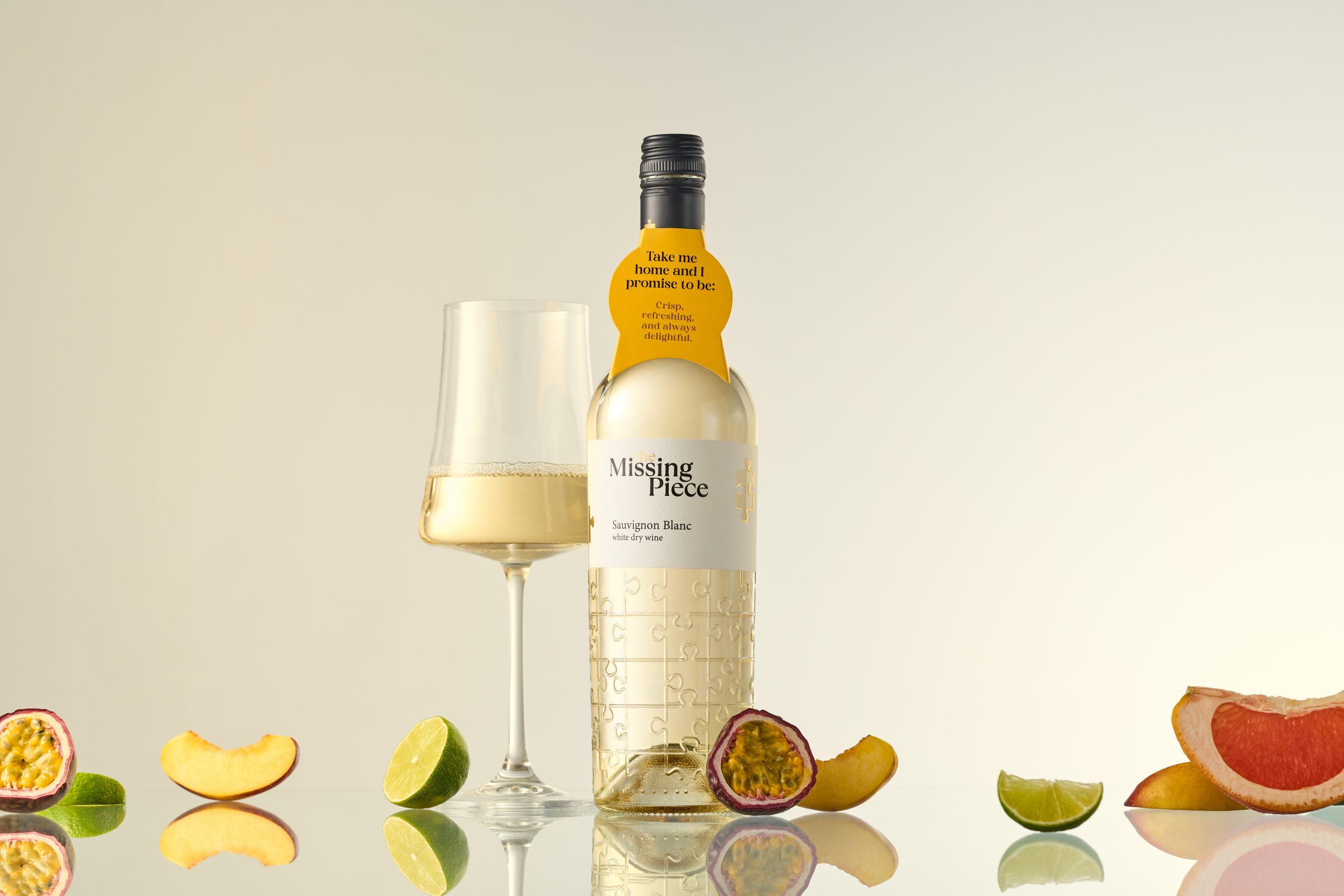It’s (self-evidently) a headline-grabbing ambition: William Grant & Sons’ luxury whisky arm, House of Hazelwood, plans to release the ‘world’s first’ 100-year-old grain whisky – in 2065. But the full story is more complex, encompassing a reaction against the ‘commoditisation’ of high-end whisky, and taking inspiration from an unlikely source: hip-hop act Wu-Tang Clan. Richard Woodard reports.

The rare whisky market has been so molten-hot in recent years that, at times, we seem to have entered an arms race to launch ever older whiskies, from independent bottler Gordon & MacPhail’s septuagenarian Mortlach and 80-year-old Glenlivet, to successive Macallan offerings that have tipped the scales at 78, 81 and 84 years old. It prompts an obvious question: how high can you go?
Well, if House of Hazelwood’s One For The Next project reaches fruition, the answer is: 100. The luxury whisky arm of William Grant & Sons, which stewards the owning Gordon family’s considerable maturing stocks of venerable whiskies, has just released a 60-year-old single grain whisky sourced from the company’s Girvan distillery.
There are 25 bottles available of One For The Next Chapter One, with a recommended selling price of £10,000 each. But there’s a twist: only a small proportion of the whisky has been bottled; the rest will be left to continue to mature over the coming decades, and will be successively bottled at 70, 80, 90 and 100 years of age.
The numbers make it sound like another glitzy, beyond-the-reach-of-normal-people exercise in whisky grandstanding – the kind of thing that enrages enthusiasts who hanker wistfully for the days when you could pick up a bottle of Black Bowmore in Oddbins for just over £100. But the philosophy underpinning One For The Next is, if anything, the polar opposite of such soulless HNWI marketing.
“A couple of threads came together,” explains Jonathan Gibson, House of Hazelwood director. In particular, he recalls a conversation with Kirsten Grant Meikle, the fifth-generation family member who serves on the House of Hazelwood board. “I was talking to her about a project that would give collectors the opportunity to get into the mindset of the family, because it’s very much a family project.
“Each generation has taken what was passed to them. You take what was given to you, make it bigger, more varied and more interesting. Then the next generation does the same thing. Whisky as a category is about the future; it’s not about today.”
A big hip-hop fan, Gibson was also inspired by Wu-Tang Clan’s
Once Upon a Time in Shaolin – a studio album of which only one copy was made, then sold for US$2 million in 2015, on condition that it would not be commercially released until 2103. Despite the rather unhappy dénouement of that project – a muddied tale of legal wrangles and NFTs – Gibson cites it as an example of “creating something of value that wasn’t for now, but was for generations down the line”.
This is, he argues, particularly resonant in the era of the ‘flipper’ – a person who buys a bottle of whisky not because they want to drink it or add it to their collection, but because they want to sell it on (or ‘flip’ it) for short-term gain. Instead, One For The Next – always assuming that purchasers go on to buy the successively older four whiskies as they are bottled – entails an investment in the future, possibly beyond an individual’s life span.
“A lot of people we sell to are in the middle of their lives,” says Gibson. “Hopefully people who start the journey [of buying the whiskies] will manage to finish the journey, but probably a lot of them won’t. So this involves building up something very personal to them, but that they can pass on for their children to enjoy in the future.”
There’s no compulsion for anyone to buy all of the whiskies, but purchasers of the 60-year-old will be given first refusal on future releases, and Gibson confirms that each of the buyers to date – he says “about half” of the 25 bottles have been sold in the month or so since the project was unveiled – intends to complete the set, in some cases making financial plans to enable their heirs to do so, should they die in the intervening period.
The collection is designed to be housed in a custom-built display cabinet, made using wood harvested from the garden of Hazelwood House, the Gordon family’s Speyside home. But, theoretically, a purchaser could use it to show off One For The Next Chapter One, plus four other, unrelated whiskies.
Not that Gibson thinks that will happen, the idea being that involvement in the project creates a close personal bond between the purchasers, the whisky and the company – he hopes that buyers will come up to Scotland and meet the family, and the team behind the creation of One For The Next. “It’s just moving away from the short-termism that we’ve seen in the whisky market over recent years – the commoditisation of top-end, rare whisky where the romance, magic and personal connection has been replaced with something a bit colder,” he says.
That ethos is perhaps a nice fit for the character of House of Hazelwood, with its esoteric array of long-aged releases – grains, blends and blended malts, with quirky names such as A Minute to Midnight, The Old Ways and Queen of Hebrides. That’s an attraction, says Gibson, for collectors who have done iconic Sherried Speyside single malt and want to move on. “They’re looking for something different,” he says. “We can offer a whole other part of the Scotch whisky market that people haven’t even looked at. Old grain whisky is a great example of that.”
However attractive the concept may be, there are considerable challenges in getting a whisky to its centenary. Two perils loom particularly large: the risk that the ABV of the liquid might drop below 40% (at which point it cannot legally be bottled as Scotch whisky); and the danger that the wood influence from the cask might overwhelm the distillate.
House of Hazelwood’s answer to this involves reracking the 60-year-old whisky into specially coopered, “very well-used” European oak hogshead casks. European oak’s thicker staves should inhibit evaporative losses, and the old wood should directly impart no appreciable flavour over the coming decades.
The casks, meanwhile, are squirrelled away deep in a dark corner of a particularly cool, semi-subterranean warehouse on the old Convalmore distillery site in Dufftown. “We wouldn’t do the project if we didn’t think it would get to 100 years of age,” emphasises Gibson. “But we’ve been very careful not to be definite about it. That’s more because the future is unknowable.”
Unknowable too is the state of the rare whisky market in 40 years’ time. Eighteen months ago, a bottle of Macallan sold at auction for £2.2m; today, the bull market in luxury expressions has turned positively ursine. How does that affect One For The Next?
“To be completely honest, it doesn’t make it easier, and part of the reason for that is that there’s probably more competition for the same clients, the same people – and the confidence of buyers is lower than it has been, and understandably so,” admits Gibson.
“But we’ve never played on the ‘investor’ side, so we’re less exposed to that than some. In many ways, House of Hazelwood is a complicated brand for people to understand … There’s something quite nice about the shared endeavour that we go into with our clients. There’s that element of trust.”
Tasting Note
One For The Next Chapter One, 60-Year-Old Single Grain Scotch Whisky
£10,000/70cl, available exclusively to order from House of Hazelwood and WG&S Distillers Libraries
On the nose, surprisingly floral – jasmine and honeysuckle, then a waft of lilies in full bloom. Classic grain notes of buttery popcorn and sweetshop counter are followed by hints of darker berry fruit. On the palate, the silky mouthfeel carries blue fruits, then sweet, sumptuous flavours of pastel de nata and apple crumble slathered in vanilla cream. The oak – reminiscent of a fine wine cellar – is present, but never intrusive. The finish is warm, enveloping and lingering, with a return to those early floral notes. Now where’s that time machine…?

 The rare whisky market has been so molten-hot in recent years that, at times, we seem to have entered an arms race to launch ever older whiskies, from independent bottler Gordon & MacPhail’s septuagenarian Mortlach and 80-year-old Glenlivet, to successive Macallan offerings that have tipped the scales at 78, 81 and 84 years old. It prompts an obvious question: how high can you go?
Well, if House of Hazelwood’s One For The Next project reaches fruition, the answer is: 100. The luxury whisky arm of William Grant & Sons, which stewards the owning Gordon family’s considerable maturing stocks of venerable whiskies, has just released a 60-year-old single grain whisky sourced from the company’s Girvan distillery.
There are 25 bottles available of One For The Next Chapter One, with a recommended selling price of £10,000 each. But there’s a twist: only a small proportion of the whisky has been bottled; the rest will be left to continue to mature over the coming decades, and will be successively bottled at 70, 80, 90 and 100 years of age.
The numbers make it sound like another glitzy, beyond-the-reach-of-normal-people exercise in whisky grandstanding – the kind of thing that enrages enthusiasts who hanker wistfully for the days when you could pick up a bottle of Black Bowmore in Oddbins for just over £100. But the philosophy underpinning One For The Next is, if anything, the polar opposite of such soulless HNWI marketing.
“A couple of threads came together,” explains Jonathan Gibson, House of Hazelwood director. In particular, he recalls a conversation with Kirsten Grant Meikle, the fifth-generation family member who serves on the House of Hazelwood board. “I was talking to her about a project that would give collectors the opportunity to get into the mindset of the family, because it’s very much a family project.
“Each generation has taken what was passed to them. You take what was given to you, make it bigger, more varied and more interesting. Then the next generation does the same thing. Whisky as a category is about the future; it’s not about today.”
A big hip-hop fan, Gibson was also inspired by Wu-Tang Clan’s Once Upon a Time in Shaolin – a studio album of which only one copy was made, then sold for US$2 million in 2015, on condition that it would not be commercially released until 2103. Despite the rather unhappy dénouement of that project – a muddied tale of legal wrangles and NFTs – Gibson cites it as an example of “creating something of value that wasn’t for now, but was for generations down the line”.
This is, he argues, particularly resonant in the era of the ‘flipper’ – a person who buys a bottle of whisky not because they want to drink it or add it to their collection, but because they want to sell it on (or ‘flip’ it) for short-term gain. Instead, One For The Next – always assuming that purchasers go on to buy the successively older four whiskies as they are bottled – entails an investment in the future, possibly beyond an individual’s life span.
“A lot of people we sell to are in the middle of their lives,” says Gibson. “Hopefully people who start the journey [of buying the whiskies] will manage to finish the journey, but probably a lot of them won’t. So this involves building up something very personal to them, but that they can pass on for their children to enjoy in the future.”
There’s no compulsion for anyone to buy all of the whiskies, but purchasers of the 60-year-old will be given first refusal on future releases, and Gibson confirms that each of the buyers to date – he says “about half” of the 25 bottles have been sold in the month or so since the project was unveiled – intends to complete the set, in some cases making financial plans to enable their heirs to do so, should they die in the intervening period.
The collection is designed to be housed in a custom-built display cabinet, made using wood harvested from the garden of Hazelwood House, the Gordon family’s Speyside home. But, theoretically, a purchaser could use it to show off One For The Next Chapter One, plus four other, unrelated whiskies.
Not that Gibson thinks that will happen, the idea being that involvement in the project creates a close personal bond between the purchasers, the whisky and the company – he hopes that buyers will come up to Scotland and meet the family, and the team behind the creation of One For The Next. “It’s just moving away from the short-termism that we’ve seen in the whisky market over recent years – the commoditisation of top-end, rare whisky where the romance, magic and personal connection has been replaced with something a bit colder,” he says.
That ethos is perhaps a nice fit for the character of House of Hazelwood, with its esoteric array of long-aged releases – grains, blends and blended malts, with quirky names such as A Minute to Midnight, The Old Ways and Queen of Hebrides. That’s an attraction, says Gibson, for collectors who have done iconic Sherried Speyside single malt and want to move on. “They’re looking for something different,” he says. “We can offer a whole other part of the Scotch whisky market that people haven’t even looked at. Old grain whisky is a great example of that.”
However attractive the concept may be, there are considerable challenges in getting a whisky to its centenary. Two perils loom particularly large: the risk that the ABV of the liquid might drop below 40% (at which point it cannot legally be bottled as Scotch whisky); and the danger that the wood influence from the cask might overwhelm the distillate.
House of Hazelwood’s answer to this involves reracking the 60-year-old whisky into specially coopered, “very well-used” European oak hogshead casks. European oak’s thicker staves should inhibit evaporative losses, and the old wood should directly impart no appreciable flavour over the coming decades.
The casks, meanwhile, are squirrelled away deep in a dark corner of a particularly cool, semi-subterranean warehouse on the old Convalmore distillery site in Dufftown. “We wouldn’t do the project if we didn’t think it would get to 100 years of age,” emphasises Gibson. “But we’ve been very careful not to be definite about it. That’s more because the future is unknowable.”
Unknowable too is the state of the rare whisky market in 40 years’ time. Eighteen months ago, a bottle of Macallan sold at auction for £2.2m; today, the bull market in luxury expressions has turned positively ursine. How does that affect One For The Next?
“To be completely honest, it doesn’t make it easier, and part of the reason for that is that there’s probably more competition for the same clients, the same people – and the confidence of buyers is lower than it has been, and understandably so,” admits Gibson.
“But we’ve never played on the ‘investor’ side, so we’re less exposed to that than some. In many ways, House of Hazelwood is a complicated brand for people to understand … There’s something quite nice about the shared endeavour that we go into with our clients. There’s that element of trust.”
The rare whisky market has been so molten-hot in recent years that, at times, we seem to have entered an arms race to launch ever older whiskies, from independent bottler Gordon & MacPhail’s septuagenarian Mortlach and 80-year-old Glenlivet, to successive Macallan offerings that have tipped the scales at 78, 81 and 84 years old. It prompts an obvious question: how high can you go?
Well, if House of Hazelwood’s One For The Next project reaches fruition, the answer is: 100. The luxury whisky arm of William Grant & Sons, which stewards the owning Gordon family’s considerable maturing stocks of venerable whiskies, has just released a 60-year-old single grain whisky sourced from the company’s Girvan distillery.
There are 25 bottles available of One For The Next Chapter One, with a recommended selling price of £10,000 each. But there’s a twist: only a small proportion of the whisky has been bottled; the rest will be left to continue to mature over the coming decades, and will be successively bottled at 70, 80, 90 and 100 years of age.
The numbers make it sound like another glitzy, beyond-the-reach-of-normal-people exercise in whisky grandstanding – the kind of thing that enrages enthusiasts who hanker wistfully for the days when you could pick up a bottle of Black Bowmore in Oddbins for just over £100. But the philosophy underpinning One For The Next is, if anything, the polar opposite of such soulless HNWI marketing.
“A couple of threads came together,” explains Jonathan Gibson, House of Hazelwood director. In particular, he recalls a conversation with Kirsten Grant Meikle, the fifth-generation family member who serves on the House of Hazelwood board. “I was talking to her about a project that would give collectors the opportunity to get into the mindset of the family, because it’s very much a family project.
“Each generation has taken what was passed to them. You take what was given to you, make it bigger, more varied and more interesting. Then the next generation does the same thing. Whisky as a category is about the future; it’s not about today.”
A big hip-hop fan, Gibson was also inspired by Wu-Tang Clan’s Once Upon a Time in Shaolin – a studio album of which only one copy was made, then sold for US$2 million in 2015, on condition that it would not be commercially released until 2103. Despite the rather unhappy dénouement of that project – a muddied tale of legal wrangles and NFTs – Gibson cites it as an example of “creating something of value that wasn’t for now, but was for generations down the line”.
This is, he argues, particularly resonant in the era of the ‘flipper’ – a person who buys a bottle of whisky not because they want to drink it or add it to their collection, but because they want to sell it on (or ‘flip’ it) for short-term gain. Instead, One For The Next – always assuming that purchasers go on to buy the successively older four whiskies as they are bottled – entails an investment in the future, possibly beyond an individual’s life span.
“A lot of people we sell to are in the middle of their lives,” says Gibson. “Hopefully people who start the journey [of buying the whiskies] will manage to finish the journey, but probably a lot of them won’t. So this involves building up something very personal to them, but that they can pass on for their children to enjoy in the future.”
There’s no compulsion for anyone to buy all of the whiskies, but purchasers of the 60-year-old will be given first refusal on future releases, and Gibson confirms that each of the buyers to date – he says “about half” of the 25 bottles have been sold in the month or so since the project was unveiled – intends to complete the set, in some cases making financial plans to enable their heirs to do so, should they die in the intervening period.
The collection is designed to be housed in a custom-built display cabinet, made using wood harvested from the garden of Hazelwood House, the Gordon family’s Speyside home. But, theoretically, a purchaser could use it to show off One For The Next Chapter One, plus four other, unrelated whiskies.
Not that Gibson thinks that will happen, the idea being that involvement in the project creates a close personal bond between the purchasers, the whisky and the company – he hopes that buyers will come up to Scotland and meet the family, and the team behind the creation of One For The Next. “It’s just moving away from the short-termism that we’ve seen in the whisky market over recent years – the commoditisation of top-end, rare whisky where the romance, magic and personal connection has been replaced with something a bit colder,” he says.
That ethos is perhaps a nice fit for the character of House of Hazelwood, with its esoteric array of long-aged releases – grains, blends and blended malts, with quirky names such as A Minute to Midnight, The Old Ways and Queen of Hebrides. That’s an attraction, says Gibson, for collectors who have done iconic Sherried Speyside single malt and want to move on. “They’re looking for something different,” he says. “We can offer a whole other part of the Scotch whisky market that people haven’t even looked at. Old grain whisky is a great example of that.”
However attractive the concept may be, there are considerable challenges in getting a whisky to its centenary. Two perils loom particularly large: the risk that the ABV of the liquid might drop below 40% (at which point it cannot legally be bottled as Scotch whisky); and the danger that the wood influence from the cask might overwhelm the distillate.
House of Hazelwood’s answer to this involves reracking the 60-year-old whisky into specially coopered, “very well-used” European oak hogshead casks. European oak’s thicker staves should inhibit evaporative losses, and the old wood should directly impart no appreciable flavour over the coming decades.
The casks, meanwhile, are squirrelled away deep in a dark corner of a particularly cool, semi-subterranean warehouse on the old Convalmore distillery site in Dufftown. “We wouldn’t do the project if we didn’t think it would get to 100 years of age,” emphasises Gibson. “But we’ve been very careful not to be definite about it. That’s more because the future is unknowable.”
Unknowable too is the state of the rare whisky market in 40 years’ time. Eighteen months ago, a bottle of Macallan sold at auction for £2.2m; today, the bull market in luxury expressions has turned positively ursine. How does that affect One For The Next?
“To be completely honest, it doesn’t make it easier, and part of the reason for that is that there’s probably more competition for the same clients, the same people – and the confidence of buyers is lower than it has been, and understandably so,” admits Gibson.
“But we’ve never played on the ‘investor’ side, so we’re less exposed to that than some. In many ways, House of Hazelwood is a complicated brand for people to understand … There’s something quite nice about the shared endeavour that we go into with our clients. There’s that element of trust.”



















































































![The American contingent and Turkey’s autonomy goals: Paris Air Show Day 3 [Video]](https://breakingdefense.com/wp-content/uploads/sites/3/2025/06/Wednesday-Wrap.00_00_32_21.Still001.png?#)
![A look at the jets flying high above the Paris Air Show [PHOTOS]](https://breakingdefense.com/wp-content/uploads/sites/3/2025/06/Rafale_02-scaled-e1750268097167.jpg?#)


























































